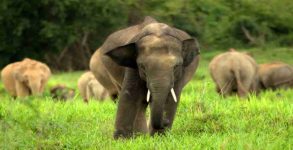Elephants are one of the most adorable and friendly animals. To focus on bringing the world together to help elephants and also inform people and organisations about the threat that an elephant faces, World Elephant Day is celebrated on August 12 every year.
Although this gigantic animal is loved and respected by people and cultures around the world, it rises higher and higher on the scale measuring extinction.
History of World Elephant Day
World Elephant Day was created in 2011 by two Canadian filmmaker Patricia Sims and Thailand’s Elephant Reintroduction Foundation and first celebrated on August 12, 2012. The initiative was greatly supported by film star and Star Trek legend William Shatner who narrated the documentary Return to the Forest, a fascinating 30-minute film about the reintroduction of captive Asian elephants to the wild.
Why elephants are endangered?
Ivory Trade
The prime issue is the ivory trade. Currently, the demand for ivory is the biggest in China, with the price of ivory often exceeding the price of gold, something that makes elephants bigger targets than ever. The economics here work firmly against the humble elephant. Extreme levels of poverty in Africa mean that people can often take a month’s wages or more from the ivory of a single animal, selling it on the international market.
Elephant Ride
Elephant rides might look fun for humans but, it’s not any fun for the poor creature, not to mention the cruelty elephants have to endure from a young age just to carry you and/or your luggage. Each ride for them carries a risk of long-term physical injury. Since elephants have sharp bony protrusions instead of smooth and round spinal disks, the bony protrusions along with tissue protecting them are vulnerable to weight and pressure.
Habitat Loss
Habitation loss is also a danger to the world’s elephant population as it deprives elephants of the hundreds of pounds of food they need every day, making it more difficult for them to breed and making it easier for poachers to track them down. Data suggest that the geographic range of elephants fell by around 30 percent between 2002 and 2011, with a similar loss of savannah for them to roam. The introduction of large parks throughout Africa has allowed habitat destruction to stabilize, but illegal poaching remains a dire threat.
From poaching to being stored beneath human care, elephants regardless of their large measurement are usually not allowed to be on their very own.


















